Alexander Davey 2014
Monday, 13 April 2015
Sunday, 12 April 2015
Question 2
My key Character is the protagonist: Ray Shepherd A.K.A Tom Hall.
Ray Shepherd is presented as a young male protagonist which will attract the same type of audience which this film was aimed at. This means the audience can relate to the protagonist making them side with him more compared to other films.
Comparing to: Bourne Supremacy - Jason Bourne
They are both young male protagonists. We tried to copy this as we had the same target audience as the Bourne supremacy (male under 25).
Both of these characters are wearing quite casual clothes so audience can relate to them as they seem more 'normal' and realistic. This will make people think they are more like them and put the audience already on their side. Both of the characters are the main character in their films which makes them even more similar and therefore more of the same audience will be attracted to my film. Also both of the characters are very mysterious as neither know what is completely going on. This keeps the audience wondering what is going to happen next and leaves everything as a constant cliff-hanger.
The characters are different as Ray Shepherd is usually involved in hand-to-hand combat compared to the Bourne Supremacy where there is a lot weapon usage. I chose to do this because it is based in a busy urban area so usage of long range weapons will be unlikely due to lots of people being around. This will reduce civilian injuries and chance of being caught. This suited us better as we are low budget and are trying to appeal to an audience who like to more realistic films.
The Henchmen:
These two side characters were loosely based on OddJob from James Bond. This was mainly because of his looks, he wears a suit and follows orders, this was what my two characters were doing as well and they didn't seem to question why they were doing this. Also I felt that the two antagonists from my opening sequence needed suits due to it being based around mafia life and typically people in these films wear suits no matter what they are doing. This also takes away their identity as they follow orders from their boss and don't have a choice of what to do. They also don't know what they are completely doing or why they are doing it but they still do it.
OddJob:
The boss in my opening sequence was very effective as I used the stereotypical view of him as I never revealed his face to the camera which makes them seem very mysterious. Thus keeps the audience asking who the man is and why he so important and has this man working for him. This will keep the audience watching as they will want to know who the man is throughout the film. He has a low of power over the film as he controls where Ray Shepherd goes and what missions he has to do. This means the boss controls where film goes as the film will follow the main protagonist (Ray). This also puts the boss in charge of the audience as he can chose when to reveal himself if at all.
The boss is similar to Ernst Stavro Blofield in James Bond. He started to stereotype that bosses sit in spinny chairs stroking a cat. His identity was kept secret for most of the film which is very similar to my boss. My boss is only shown from behind which keeps his face a secret so he could be anyone. This is good as my character could be a protagonist and could be an antagonist, it isn't clear. Therefore I can transfer some of Blofield's characteristics over to my boss.
Ernst Stavro Blofield:
Comparing to: Bourne Supremacy - Jason Bourne
They are both young male protagonists. We tried to copy this as we had the same target audience as the Bourne supremacy (male under 25).
Both of these characters are wearing quite casual clothes so audience can relate to them as they seem more 'normal' and realistic. This will make people think they are more like them and put the audience already on their side. Both of the characters are the main character in their films which makes them even more similar and therefore more of the same audience will be attracted to my film. Also both of the characters are very mysterious as neither know what is completely going on. This keeps the audience wondering what is going to happen next and leaves everything as a constant cliff-hanger.
The Henchmen:
These two side characters were loosely based on OddJob from James Bond. This was mainly because of his looks, he wears a suit and follows orders, this was what my two characters were doing as well and they didn't seem to question why they were doing this. Also I felt that the two antagonists from my opening sequence needed suits due to it being based around mafia life and typically people in these films wear suits no matter what they are doing. This also takes away their identity as they follow orders from their boss and don't have a choice of what to do. They also don't know what they are completely doing or why they are doing it but they still do it.
OddJob:
The boss in my opening sequence was very effective as I used the stereotypical view of him as I never revealed his face to the camera which makes them seem very mysterious. Thus keeps the audience asking who the man is and why he so important and has this man working for him. This will keep the audience watching as they will want to know who the man is throughout the film. He has a low of power over the film as he controls where Ray Shepherd goes and what missions he has to do. This means the boss controls where film goes as the film will follow the main protagonist (Ray). This also puts the boss in charge of the audience as he can chose when to reveal himself if at all.
The boss is similar to Ernst Stavro Blofield in James Bond. He started to stereotype that bosses sit in spinny chairs stroking a cat. His identity was kept secret for most of the film which is very similar to my boss. My boss is only shown from behind which keeps his face a secret so he could be anyone. This is good as my character could be a protagonist and could be an antagonist, it isn't clear. Therefore I can transfer some of Blofield's characteristics over to my boss.
Ernst Stavro Blofield:
Thursday, 19 March 2015
Question 6
What have your learnt about technologies from the process of constructing this product?
I have used many different technologies in the making of my media product. I chose to use many due to my final piece being a visual text. I used:
Research and Planning:
Powtoon
Blogger
Prezi
Youtube
Slideshare
Mac computer
Adobe Premiere
Haiku Dech
Emaze
Survey Monkey
Filming
DSLR camera
GoPro
Tripod
Editing
Adobe Premiere
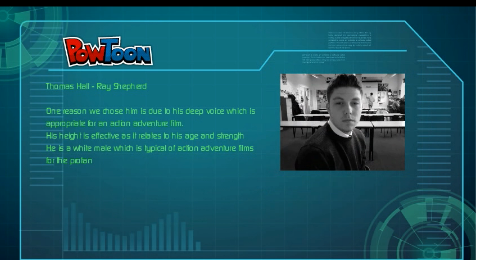 Lots of the technologies were new to me but after being taught the basics by other people or a tutorial I found it quite simple to use most of the technologies. Powtoon was a new piece of technology for me but after the tutorial and multiple uses i found it to be very simple to use. I developed my skills in this as I could make a good Powtoon in a few minutes which was good as it wasn't too complicated and was time efficient. Evidence of this is of the cast, I think this is effective as different characters are shown at different times and the background effect relates
Lots of the technologies were new to me but after being taught the basics by other people or a tutorial I found it quite simple to use most of the technologies. Powtoon was a new piece of technology for me but after the tutorial and multiple uses i found it to be very simple to use. I developed my skills in this as I could make a good Powtoon in a few minutes which was good as it wasn't too complicated and was time efficient. Evidence of this is of the cast, I think this is effective as different characters are shown at different times and the background effect relates
to the action-adventure genre due to it being spy-related. Powtoon allowed me to create cool transitions and a more professional slideshow. Compared to Powerpoint, Powtoon is much better for being creative although it cannot have as much information on it. I found this useful as i could make my work more to the point and concise.
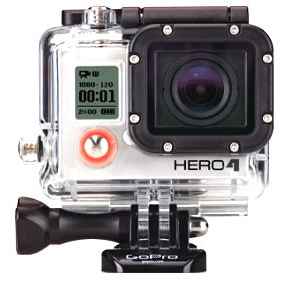 The GoPro was a new technology for me to use. After a quick tutorial i found it to be quite simple as an app on my phone allowed me to see what was being filmed. This let me and my group see if certain shots were good or not and if they needed re-filming in a different way. However in our draft we didn't realise how wide the lens were as we thought we left the camera bags and equipment out of shot but when we put the shot on the Mac we found that it was still in shot. This meant that we had to re-film this part which meant we could improve other shots as well. Also, with the GoPro we found it to be more effective if the camera were to be placed at the top of the nose which gave a more realistic view of what the character would see.
The GoPro was a new technology for me to use. After a quick tutorial i found it to be quite simple as an app on my phone allowed me to see what was being filmed. This let me and my group see if certain shots were good or not and if they needed re-filming in a different way. However in our draft we didn't realise how wide the lens were as we thought we left the camera bags and equipment out of shot but when we put the shot on the Mac we found that it was still in shot. This meant that we had to re-film this part which meant we could improve other shots as well. Also, with the GoPro we found it to be more effective if the camera were to be placed at the top of the nose which gave a more realistic view of what the character would see.
The GoPro needed specialist planning before we could use it. We drew out every shot which can be seen on my animatic so we knew exactly what we were filming and how it would look. This let us film efficiently as possible. We had to reshoot a few shots where we used the GoPro as we left the camera bag and equipment in the shot. This happened as we didn't realise how wide the GoPro lens were. Also we had to re-film another shot of the protagonist looking in the bag. We had to re-film this as we didn't realise that you couldn't see what he was actually doing, the centre of the screen was much higher than we would have liked it to be. To fix this we placed the GoPro at the base of the nose which gave a better viewpoint as the lens were much closer to the eyes.
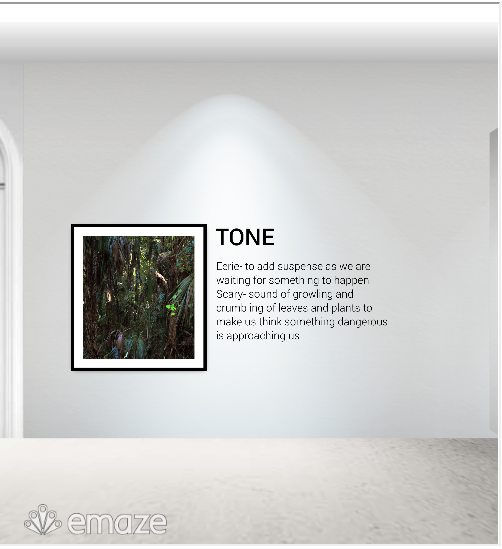
Emaze was also another new technology to me but was very simple to use. It has allowed me to present my ideas in creative ways as whilst i am describing the conventions of Jurassic Park, it is set out in a museum like setting. The transitions take the viewer around the different points which is a unique way of presenting something that could have just as easily been done on Powerpoint but would have been much less effective.
I used Adobe Premiere to produce the whole opening sequence creatively. It allowed me to create the titles which have the sheen effect. This is unique as no other title will be exactly the same to it ,as i had to create it, although i did follow a tutorial that i found on Youtube. I applied this effect to every title on the opening sequence. This meant that my opening sequence will be linked to a certain effect.
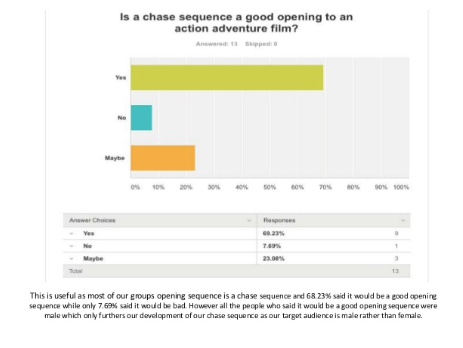 Survey Monkey allowed me to produce my work in a creative way as I could produce graph based on my results. This let me see what things would work within my opening sequence and what aspects
should be taken away. These results were gained from my target audience as I placed it on Facebook and got other people who do Media Studies to complete the questionnaire.
Survey Monkey allowed me to produce my work in a creative way as I could produce graph based on my results. This let me see what things would work within my opening sequence and what aspects
should be taken away. These results were gained from my target audience as I placed it on Facebook and got other people who do Media Studies to complete the questionnaire.
I have used many different technologies in the making of my media product. I chose to use many due to my final piece being a visual text. I used:
Research and Planning:
Powtoon
Blogger
Prezi
Youtube
Slideshare
Mac computer
Adobe Premiere
Haiku Dech
Emaze
Survey Monkey
Filming
DSLR camera
GoPro
Tripod
Editing
Adobe Premiere
 Lots of the technologies were new to me but after being taught the basics by other people or a tutorial I found it quite simple to use most of the technologies. Powtoon was a new piece of technology for me but after the tutorial and multiple uses i found it to be very simple to use. I developed my skills in this as I could make a good Powtoon in a few minutes which was good as it wasn't too complicated and was time efficient. Evidence of this is of the cast, I think this is effective as different characters are shown at different times and the background effect relates
Lots of the technologies were new to me but after being taught the basics by other people or a tutorial I found it quite simple to use most of the technologies. Powtoon was a new piece of technology for me but after the tutorial and multiple uses i found it to be very simple to use. I developed my skills in this as I could make a good Powtoon in a few minutes which was good as it wasn't too complicated and was time efficient. Evidence of this is of the cast, I think this is effective as different characters are shown at different times and the background effect relatesto the action-adventure genre due to it being spy-related. Powtoon allowed me to create cool transitions and a more professional slideshow. Compared to Powerpoint, Powtoon is much better for being creative although it cannot have as much information on it. I found this useful as i could make my work more to the point and concise.
 The GoPro was a new technology for me to use. After a quick tutorial i found it to be quite simple as an app on my phone allowed me to see what was being filmed. This let me and my group see if certain shots were good or not and if they needed re-filming in a different way. However in our draft we didn't realise how wide the lens were as we thought we left the camera bags and equipment out of shot but when we put the shot on the Mac we found that it was still in shot. This meant that we had to re-film this part which meant we could improve other shots as well. Also, with the GoPro we found it to be more effective if the camera were to be placed at the top of the nose which gave a more realistic view of what the character would see.
The GoPro was a new technology for me to use. After a quick tutorial i found it to be quite simple as an app on my phone allowed me to see what was being filmed. This let me and my group see if certain shots were good or not and if they needed re-filming in a different way. However in our draft we didn't realise how wide the lens were as we thought we left the camera bags and equipment out of shot but when we put the shot on the Mac we found that it was still in shot. This meant that we had to re-film this part which meant we could improve other shots as well. Also, with the GoPro we found it to be more effective if the camera were to be placed at the top of the nose which gave a more realistic view of what the character would see.The GoPro needed specialist planning before we could use it. We drew out every shot which can be seen on my animatic so we knew exactly what we were filming and how it would look. This let us film efficiently as possible. We had to reshoot a few shots where we used the GoPro as we left the camera bag and equipment in the shot. This happened as we didn't realise how wide the GoPro lens were. Also we had to re-film another shot of the protagonist looking in the bag. We had to re-film this as we didn't realise that you couldn't see what he was actually doing, the centre of the screen was much higher than we would have liked it to be. To fix this we placed the GoPro at the base of the nose which gave a better viewpoint as the lens were much closer to the eyes.

Emaze was also another new technology to me but was very simple to use. It has allowed me to present my ideas in creative ways as whilst i am describing the conventions of Jurassic Park, it is set out in a museum like setting. The transitions take the viewer around the different points which is a unique way of presenting something that could have just as easily been done on Powerpoint but would have been much less effective.
I used Adobe Premiere to produce the whole opening sequence creatively. It allowed me to create the titles which have the sheen effect. This is unique as no other title will be exactly the same to it ,as i had to create it, although i did follow a tutorial that i found on Youtube. I applied this effect to every title on the opening sequence. This meant that my opening sequence will be linked to a certain effect.
 Survey Monkey allowed me to produce my work in a creative way as I could produce graph based on my results. This let me see what things would work within my opening sequence and what aspects
Survey Monkey allowed me to produce my work in a creative way as I could produce graph based on my results. This let me see what things would work within my opening sequence and what aspectsTuesday, 17 March 2015
Question 1
In what ways does your media product use, develop or challenge forms and conventions of real media products?
There are many conventions of an opening sequence. For example:
opening credits,
establishing shots,
introduction of mood,
close-ups,
production ident/s,
introduction of main character.
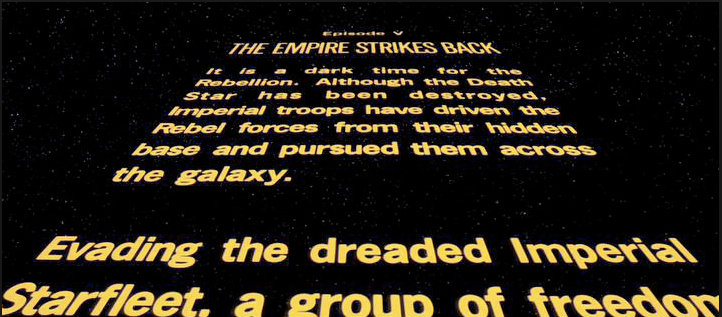 Opening credits are used at the beginning of the film so the audience can see and realise who made this film so they know what to expect (if a known name is used). These titles are usually subtle and embedded in the back-ground of the film, but they can be the only thing on screen and will usually have an effect on them or movement to keep the audience interested in what is happening.
Opening credits are used at the beginning of the film so the audience can see and realise who made this film so they know what to expect (if a known name is used). These titles are usually subtle and embedded in the back-ground of the film, but they can be the only thing on screen and will usually have an effect on them or movement to keep the audience interested in what is happening.
Establishing shots are used in the opening sequence to show where most of the film will be set. This will give the viewers back-ground knowledge of the location so they know what to expect. For example an establishing shot of fields and a small village, the audience will know where it is set and expect to see lots of rural activities such as agriculture.
The introduction of the mood of the film is a convention of an opening sequence. This mood is usually determined by sound and lighting. This will keep the audience interested in watching the rest of the film. Also the mood will help determine the genre of the film so the right mood must be chosen for example: a tragedy movie cannot have benny hill music playing in the back-ground as this will confuse the audience and lose their interest.
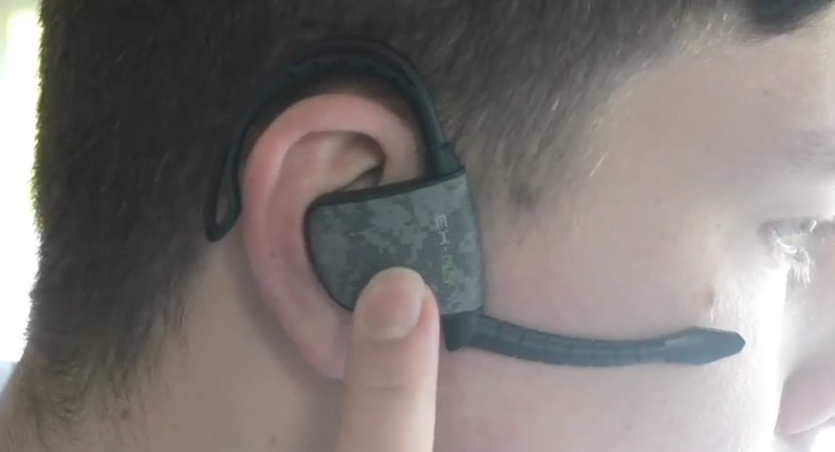 Close-ups are used in opening sequences to give abstract viewpoints which are usually inhibited with some opening credits. The close-ups will give the audience clues to what the film will be about and what may be used. Also close-ups of characters faces are used to show clear characteristics such as scars which may be important for later on in the film. These close-ups are important as they raise questions within the viewers on why these specific shots have been used.
Close-ups are used in opening sequences to give abstract viewpoints which are usually inhibited with some opening credits. The close-ups will give the audience clues to what the film will be about and what may be used. Also close-ups of characters faces are used to show clear characteristics such as scars which may be important for later on in the film. These close-ups are important as they raise questions within the viewers on why these specific shots have been used.
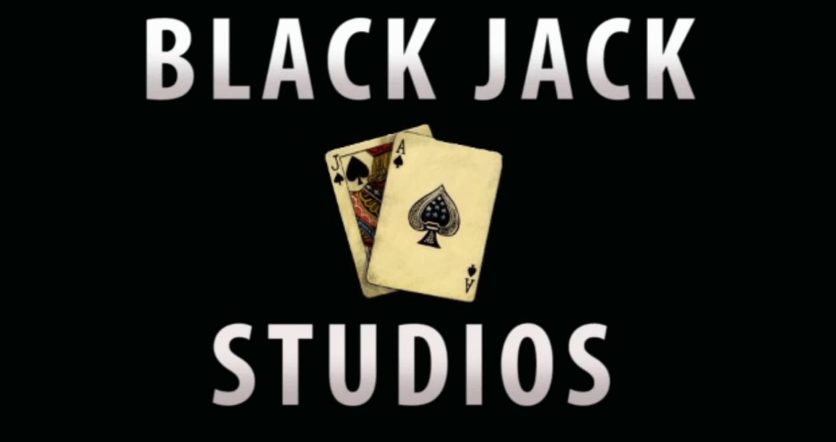
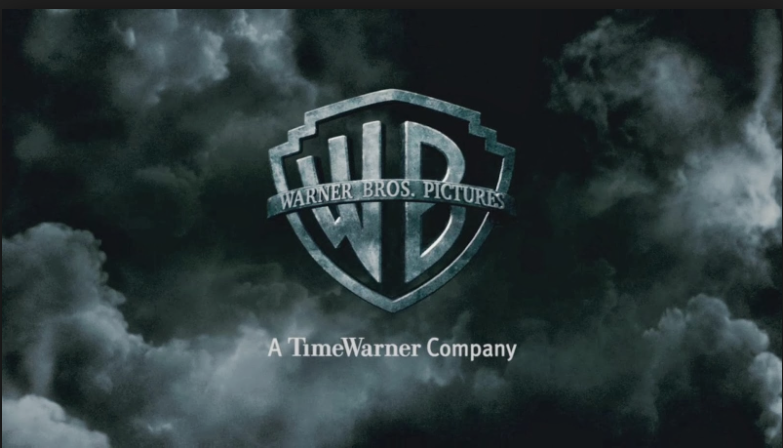 Production Idents are at the beginning of the film just before title of the film. These show the viewers who have produced the film and helped make the film which benefit the company as they gain extra publicity.
Production Idents are at the beginning of the film just before title of the film. These show the viewers who have produced the film and helped make the film which benefit the company as they gain extra publicity.
Introduction of main characters are a convention of an opening sequence. This is so the viewers can see who they are and what the film is going to be based around. The main protagonist and sometimes antagonists are shown in the opening sequence, this is to make the audience support the protagonist and get involved more in the film.
The conventions of action-adventure genres are:
fast paced editing with a lot of close ups and unique angles,
the titles are normally bold and quite obvious to see,
the soundtrack is percussion based with little or no lyrics and is fast paced,
a race against time,
mystery
and some sort of task must be accomplished (mission).
For something to be classified as fast paced, the camera shot should change within 2 seconds, this is because it gives the audience little time to see what is actually happening and keeps the audience wanting to know what is going to happen as they cannot tell what is going to happen next. Also the fast paced editing puts the viewer right in the middle of the action and makes them feel as if they are part of it which will make them support the protagonist due to most of the shots being taken from/ near the protagonist viewpoint.
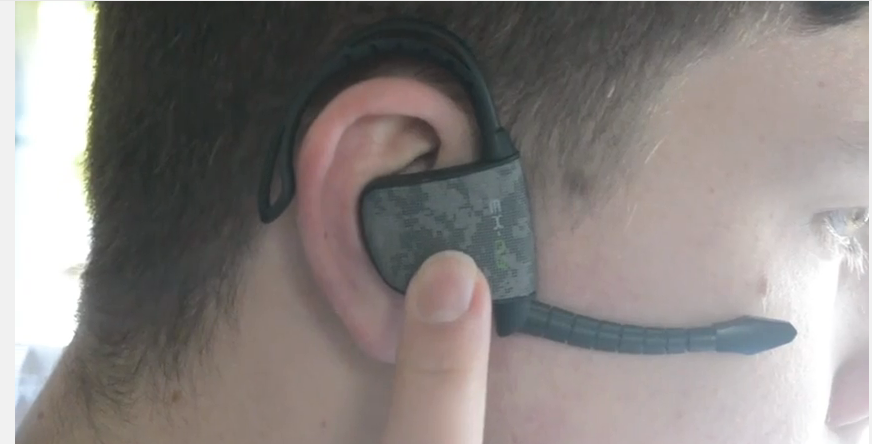 The close-ups used in action adventure are of the protagonist to show his emotion and possibly struggle and the effort he is putting into the task. This gives the viewer an emotional connection to the protagonist which only emphasises their support of the protagonist. Also the unique angles in action adventure distort the audiences view from the action which gives a more realistic view of what is going on. This puts the viewers in the film and makes them want to watch more. I used a close-up of the protagonists ear piece which shows a significant piece of information that is vital to the rest of the opening. This tells the audience how he knows what to do due to the incoming information.
The close-ups used in action adventure are of the protagonist to show his emotion and possibly struggle and the effort he is putting into the task. This gives the viewer an emotional connection to the protagonist which only emphasises their support of the protagonist. Also the unique angles in action adventure distort the audiences view from the action which gives a more realistic view of what is going on. This puts the viewers in the film and makes them want to watch more. I used a close-up of the protagonists ear piece which shows a significant piece of information that is vital to the rest of the opening. This tells the audience how he knows what to do due to the incoming information.
Titles in action adventure films are usually quite bold and obvious to see. They also tend to have an effect on them which makes this effect specific to the certain film. For example in star wars they have the famous space titles which go past the screen and off into the distance which can no longer be seen. The use of these types of effects emphasise the actors and people used to make the film, the effects are used normally to show the big name actors and directors which set them apart from the rest. I have used titles in my opening sequence in a bold font with a sheen effect which makes it quite obvious to see and really emphasises the makers of the film which fits the action-adventure genre.
The typical type of soundtrack used in action adventure films is fast-paced and percussion based. This is so the music can be played over what is happening in the shot and build tension. The soundtrack is at its most tense just before a major bit of action is about to happen and the soundtrack will usually fade off once the protagonist is safe. I have used this in my opening sequence as my drum based soundtrack fades in when he starts to get chased and then fades away once he has lost them.
A race against time is a convention of action-adventure genre because every thing must be completed before the opposing side. This creates a sense of a rush as if the other team succeeds then everything could change. This is usually when the antagonist is after a prize and the protagonist is trying to stop this. I have used this in my opening sequence as the antagonists are chasing the protagonist but he gets away before they can catch him. The scene where the antagonist picks up the other which shows the urgency that they both need to get him.
Mystery is also a convention of action-adventure as lots of questions are unanswered throughout the film. For example the viewers may not know why the antagonist is after the prize until the end where the antagonist explains why he needs it and what he plans to do with it. I have used mystery to entice the audience as they do not know why the protagonist has the prize and why it is so important. Also the 'boss' is never shown in the opening sequence as the audience only see the back of his head and hear his voice, this keeps the mystery as no one knows who he is which gives him a higher status as he knows everyone and no one knows him.
Another convention of action-adventure is that a mission must be accomplished. This is by nearly all the characters, as the protagonist is trying to stop the antagonist from completing their task. I have used this in my opening sequence as the antagonists are trying to stop the protagonist from completing his task which is stealing the item and getting away unharmed as well.
My opening sequence challenges typical conventions of action-adventure genre as the protagonist was the largest character and therefore would have the physicalness to win in a fight. The smaller antagonists are chasing him, we chose to do this as we wanted the antagonists to seem as people who follow orders and have little say in what they do, this will make them quite unlikeable characters so the audience will side with the protagonist even more. Also we thought that the typical protagonist is usually quite a big muscly person so we needed someone who would match this as much as possible.
There are many conventions of an opening sequence. For example:
opening credits,
establishing shots,
introduction of mood,
close-ups,
production ident/s,
introduction of main character.
 Opening credits are used at the beginning of the film so the audience can see and realise who made this film so they know what to expect (if a known name is used). These titles are usually subtle and embedded in the back-ground of the film, but they can be the only thing on screen and will usually have an effect on them or movement to keep the audience interested in what is happening.
Opening credits are used at the beginning of the film so the audience can see and realise who made this film so they know what to expect (if a known name is used). These titles are usually subtle and embedded in the back-ground of the film, but they can be the only thing on screen and will usually have an effect on them or movement to keep the audience interested in what is happening. Establishing shots are used in the opening sequence to show where most of the film will be set. This will give the viewers back-ground knowledge of the location so they know what to expect. For example an establishing shot of fields and a small village, the audience will know where it is set and expect to see lots of rural activities such as agriculture.
The introduction of the mood of the film is a convention of an opening sequence. This mood is usually determined by sound and lighting. This will keep the audience interested in watching the rest of the film. Also the mood will help determine the genre of the film so the right mood must be chosen for example: a tragedy movie cannot have benny hill music playing in the back-ground as this will confuse the audience and lose their interest.
 Close-ups are used in opening sequences to give abstract viewpoints which are usually inhibited with some opening credits. The close-ups will give the audience clues to what the film will be about and what may be used. Also close-ups of characters faces are used to show clear characteristics such as scars which may be important for later on in the film. These close-ups are important as they raise questions within the viewers on why these specific shots have been used.
Close-ups are used in opening sequences to give abstract viewpoints which are usually inhibited with some opening credits. The close-ups will give the audience clues to what the film will be about and what may be used. Also close-ups of characters faces are used to show clear characteristics such as scars which may be important for later on in the film. These close-ups are important as they raise questions within the viewers on why these specific shots have been used.
 Production Idents are at the beginning of the film just before title of the film. These show the viewers who have produced the film and helped make the film which benefit the company as they gain extra publicity.
Production Idents are at the beginning of the film just before title of the film. These show the viewers who have produced the film and helped make the film which benefit the company as they gain extra publicity. Introduction of main characters are a convention of an opening sequence. This is so the viewers can see who they are and what the film is going to be based around. The main protagonist and sometimes antagonists are shown in the opening sequence, this is to make the audience support the protagonist and get involved more in the film.
The conventions of action-adventure genres are:
fast paced editing with a lot of close ups and unique angles,
the titles are normally bold and quite obvious to see,
the soundtrack is percussion based with little or no lyrics and is fast paced,
a race against time,
mystery
and some sort of task must be accomplished (mission).
For something to be classified as fast paced, the camera shot should change within 2 seconds, this is because it gives the audience little time to see what is actually happening and keeps the audience wanting to know what is going to happen as they cannot tell what is going to happen next. Also the fast paced editing puts the viewer right in the middle of the action and makes them feel as if they are part of it which will make them support the protagonist due to most of the shots being taken from/ near the protagonist viewpoint.
 The close-ups used in action adventure are of the protagonist to show his emotion and possibly struggle and the effort he is putting into the task. This gives the viewer an emotional connection to the protagonist which only emphasises their support of the protagonist. Also the unique angles in action adventure distort the audiences view from the action which gives a more realistic view of what is going on. This puts the viewers in the film and makes them want to watch more. I used a close-up of the protagonists ear piece which shows a significant piece of information that is vital to the rest of the opening. This tells the audience how he knows what to do due to the incoming information.
The close-ups used in action adventure are of the protagonist to show his emotion and possibly struggle and the effort he is putting into the task. This gives the viewer an emotional connection to the protagonist which only emphasises their support of the protagonist. Also the unique angles in action adventure distort the audiences view from the action which gives a more realistic view of what is going on. This puts the viewers in the film and makes them want to watch more. I used a close-up of the protagonists ear piece which shows a significant piece of information that is vital to the rest of the opening. This tells the audience how he knows what to do due to the incoming information.Titles in action adventure films are usually quite bold and obvious to see. They also tend to have an effect on them which makes this effect specific to the certain film. For example in star wars they have the famous space titles which go past the screen and off into the distance which can no longer be seen. The use of these types of effects emphasise the actors and people used to make the film, the effects are used normally to show the big name actors and directors which set them apart from the rest. I have used titles in my opening sequence in a bold font with a sheen effect which makes it quite obvious to see and really emphasises the makers of the film which fits the action-adventure genre.
The typical type of soundtrack used in action adventure films is fast-paced and percussion based. This is so the music can be played over what is happening in the shot and build tension. The soundtrack is at its most tense just before a major bit of action is about to happen and the soundtrack will usually fade off once the protagonist is safe. I have used this in my opening sequence as my drum based soundtrack fades in when he starts to get chased and then fades away once he has lost them.
A race against time is a convention of action-adventure genre because every thing must be completed before the opposing side. This creates a sense of a rush as if the other team succeeds then everything could change. This is usually when the antagonist is after a prize and the protagonist is trying to stop this. I have used this in my opening sequence as the antagonists are chasing the protagonist but he gets away before they can catch him. The scene where the antagonist picks up the other which shows the urgency that they both need to get him.
Mystery is also a convention of action-adventure as lots of questions are unanswered throughout the film. For example the viewers may not know why the antagonist is after the prize until the end where the antagonist explains why he needs it and what he plans to do with it. I have used mystery to entice the audience as they do not know why the protagonist has the prize and why it is so important. Also the 'boss' is never shown in the opening sequence as the audience only see the back of his head and hear his voice, this keeps the mystery as no one knows who he is which gives him a higher status as he knows everyone and no one knows him.
Another convention of action-adventure is that a mission must be accomplished. This is by nearly all the characters, as the protagonist is trying to stop the antagonist from completing their task. I have used this in my opening sequence as the antagonists are trying to stop the protagonist from completing his task which is stealing the item and getting away unharmed as well.
My opening sequence challenges typical conventions of action-adventure genre as the protagonist was the largest character and therefore would have the physicalness to win in a fight. The smaller antagonists are chasing him, we chose to do this as we wanted the antagonists to seem as people who follow orders and have little say in what they do, this will make them quite unlikeable characters so the audience will side with the protagonist even more. Also we thought that the typical protagonist is usually quite a big muscly person so we needed someone who would match this as much as possible.
Monday, 16 March 2015
Tuesday, 3 March 2015
Plan B
we are planning to use lucas granddads van I'm part our sequence so tom can get away. incase we cants do this, we are going to do:
Tom will escape and Lucas and Luke will get to the end of the alley and be confused due to their being an empty street Tom will escape and Lucas and Luke will get to the end of the alley and be confused due to their being an empty street Tom will run around the corner and Luke will keep chasing and it will fade into the title.
OR
Tom will escape and Lucas and Luke will get to the end of the alley and be confused due to their being an empty street
This is the type of shot we will use as Lucas and Luke look around the corner. We will also use a whip pan to show that they are looking around
Tom will escape and Lucas and Luke will get to the end of the alley and be confused due to their being an empty street Tom will escape and Lucas and Luke will get to the end of the alley and be confused due to their being an empty street Tom will run around the corner and Luke will keep chasing and it will fade into the title.
OR
Tom will escape and Lucas and Luke will get to the end of the alley and be confused due to their being an empty street
This is the type of shot we will use as Lucas and Luke look around the corner. We will also use a whip pan to show that they are looking around
Thursday, 12 February 2015
Feedback from Draft
We got a lot of useful feedback for our draft. We got some feedback on the structure of our editing as in one scene it doesn't quite make sense as one person hangs up on a phone and another is still speaking on their phone. This helped us as we could fix this to make it more continuous and easy to follow, also it lead to us watching our clip closer and looking for other mistakes of the same type which we found with a bag as it was being closed in one scene and in another he was still looking in it.
We got a lot of positive feedback on our shot variation which is good as i tried to this whilst i was filming.
Film Project First Draft
Evaluation:
The first draft is quite good. It has helped us to realise what we can and can't do. We also managed to make a convincing fight scene which is difficult as seen in some other people's footage. I managed to get a variety of shots which suits the action-adventure genre as lots of different types of shots keep changing the point of view which increases the pace of the film. I am also proud of some of the titles. especially the puddle one as it fits perfectly with our film. Also our final title is good as it quite complex to make which will hopefully get us a few marks.
But we need to improve some of the opening shots as they were quite wobbly and improve our stability of the camera. We also need to cut out a character due to their being to many which may confuse the audience.
Thursday, 5 February 2015
How I made the title
I followed this step by step guide on YouTube to create the title and the title effect, although we have changed the font, the effect still works on the titles.
Tuesday, 3 February 2015
Possible Voiceover
Voiceover
I’m Ray Shepherd, top hitman for my dads gang. Being chased is my daily job. Maybe I was born with the talent to kill and steal, or maybe I had developed these skills over time. Who knows?
Monday, 2 February 2015
Filming Footage
Firstly we put all of our film from our SD card and Go Pro onto one track. We removed all the bad footage that will not be needed and this left us with useful footage.
We then used the storyboard and our opinions to decide how long we wanted each shot to be. We also added our soundtrack which gave us a good look into how our project will look.
We still need to film a lot of footage but we still have a few filming sessions which leaves with positive outlook what our final project will be like as long as we get good enough footage.
We then used the storyboard and our opinions to decide how long we wanted each shot to be. We also added our soundtrack which gave us a good look into how our project will look.
We still need to film a lot of footage but we still have a few filming sessions which leaves with positive outlook what our final project will be like as long as we get good enough footage.
GoPro test Cam
Although I wasn't there whilst this filming was going on I still got the other people in my group to teach me how to use the GoPro. I felt this was important so we can have as many people as possible who could use all the equipment which would give us the best footage possible.
Thursday, 29 January 2015
3 likes of other work
I chose the production ident as it looks quite complex and has a sense of mystery to it which supports the rest of their opening sequence. The word Icon also suggests that something is watching you and that is what the audience so the to main character throughout the sequence.
I chose this image as it is at a slight tilt which gives the audience the viewpoint from the main character and makes them empathise with him as they feel they are inside him.
 |
| Add caption |
I like this camera shot as it is a pan from a unique position which gives the viewer a distorted view and makes us feel as if something has happened due to being in such a weird position. Also the title is very subtle which doesn't take the viewer away from the film but is still noticeable.
Tuesday, 27 January 2015
Chase Sequence and Gun Shots Helper
Although this video is based around cars, we can transfer the same techniques over to our foot chase. will help us as we can see and learn what type of angles and length of shots to use so we can get the most effective shots as possible.
Subscribe to:
Comments (Atom)




















